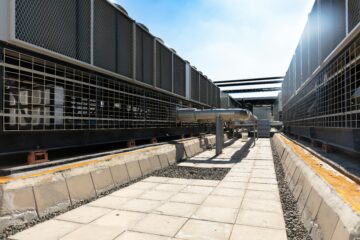Table of Contents
- Introduction
- Economic Relations Between China and Bangladesh
- Trade and Investment
- Addressing Trade Imbalance
- China’s Role in Bangladesh’s Infrastructure Development
- Major Infrastructure Projects
- Energy and Power Sector Collaboration
- The Impact of China-Bangladesh Economic Cooperation
- Job Creation and Industrial Development
- Technology Transfer and Skill Enhancement
- Challenges and the Road Ahead
- Conclusion
Introduction
The China-Bangladesh relationship has evolved into a powerful and strategic partnership over the years, driven by strong economic and infrastructural cooperation. China has become Bangladesh’s largest trading partner, significantly contributing to its economic growth and modernization. With massive investments in key sectors such as energy, transportation, and manufacturing, this alliance is reshaping Bangladesh’s future. This article explores the depth of economic and infrastructural relations between the two nations, highlighting key developments, challenges, and prospects.
Economic Relations Between China and Bangladesh
Trade and Investment
China and Bangladesh have established a robust trade relationship, with China being Bangladesh’s largest trading partner. In 2021, bilateral trade between the two nations reached over $24 billion, with Chinese exports dominating the market. Key sectors benefiting from this trade include textiles, machinery, electronics, and construction materials.
To strengthen trade ties, China has granted Bangladesh duty-free access to 97% of its exports under the Least Developed Country (LDC) initiative. This move has boosted Bangladesh’s textile and garment industry, allowing local producers to expand their reach in the Chinese market.
Addressing Trade Imbalance
One major challenge in economic relations is the trade imbalance, with Bangladesh importing significantly more from China than it exports. Efforts are being made to encourage Bangladeshi exports, particularly in sectors like pharmaceuticals, agriculture, and jute products, to balance the trade deficit.

China’s Role in Bangladesh’s Infrastructure Development
Major Infrastructure Projects
China has played a vital role in Bangladesh’s infrastructure boom, financing and constructing several landmark projects under the Belt and Road Initiative (BRI). Some of the most impactful projects include:
- Padma Bridge Rail Link – A crucial railway connectivity project linking Dhaka with the southwestern region.
- Karnaphuli Tunnel (Bangabandhu Sheikh Mujibur Rahman Tunnel) – Bangladesh’s first underwater tunnel, enhancing connectivity in Chittagong.
- Dhaka Elevated Expressway – A game-changer in reducing traffic congestion in the capital.
- Payra Deep Sea Port – Expected to boost trade efficiency and economic expansion.
Energy and Power Sector Collaboration
China’s investment in Bangladesh’s energy sector has been transformative. The construction of coal, solar, and nuclear power plants is helping Bangladesh achieve energy security. Notable projects include:
- Payra 1320 MW Thermal Power Plant – A significant contributor to Bangladesh’s electricity generation.
- Rooppur Nuclear Power Plant (in collaboration with Russia) – Where Chinese technology and expertise are also playing a supportive role.
These initiatives align with Bangladesh’s goal of becoming a developed nation by 2041.
The Impact of China-Bangladesh Economic Cooperation
Job Creation and Industrial Development
China’s investments have generated thousands of jobs, particularly in construction, manufacturing, and energy sectors. Additionally, Special Economic Zones (SEZs) like the China Economic and Industrial Zone (CEIZ) in Chittagong provide employment opportunities while attracting further investment.
Technology Transfer and Skill Enhancement
Beyond financial investments, China is facilitating technology transfer and skills development. Several educational scholarships and training programs are helping Bangladeshi professionals gain expertise in engineering, infrastructure development, and advanced manufacturing.
Challenges and the Road Ahead
While China-Bangladesh economic cooperation has flourished, some challenges need to be addressed:
- Debt Concerns: Some experts argue that Bangladesh must ensure sustainable financing strategies for large infrastructure projects to avoid debt dependency.
- Trade Imbalance: Continuous efforts are required to diversify Bangladeshi exports to reduce the trade gap.
- Geopolitical Sensitivities: Maintaining a balanced diplomatic approach between China, India, and Western countries is crucial for Bangladesh’s foreign policy stability.
Despite these hurdles, the overall trajectory of the relationship remains positive, with both nations committed to deepening economic ties.
Conclusion
The China-Bangladesh economic and infrastructural partnership stands as a model of transformative growth. With continued investments, technological advancements, and strategic collaborations, this relationship is shaping a new era of economic prosperity for Bangladesh. As both countries address challenges and strengthen trade and infrastructure development, the future of China-Bangladesh cooperation remains bright, promising mutual benefits for years to come.
Final Thoughts
For Bangladesh, China’s role as an economic partner is indispensable. By leveraging Chinese expertise, Bangladesh can achieve its vision of becoming a middle-income nation while ensuring long-term sustainability in trade and infrastructure development.



0 Comments